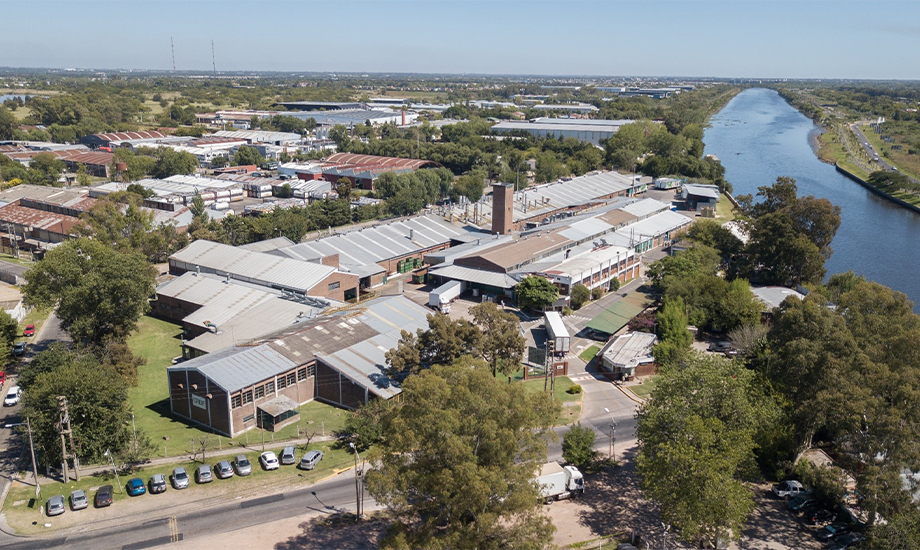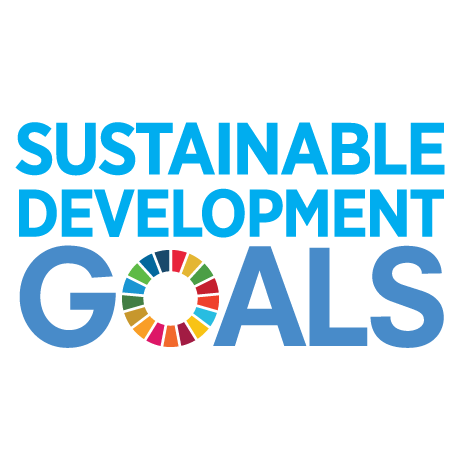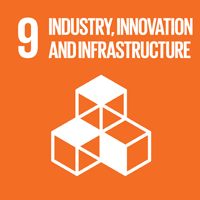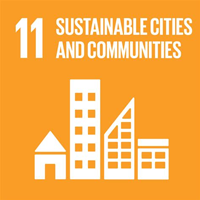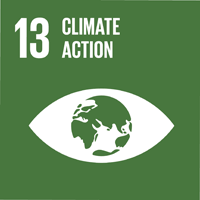- Über unser Unternehmen
- Über unseren Bericht
- Nachhaltigkeitsstrategien
- Ziele und Leistung
- ESG-Reporting-Indizes
- Bericht-Downloads
Highlights
- Mit der Build to Last-Strategie von Greif kann der Vorstand unsere Klimastrategie überwachen, für Aufklärung und Bewusstsein hinsichtlich Klimarisiken und neuer Trends sorgen und unsere Geschäftsstrategie an unseren eigenen Klimazielen und denen unserer Kunden ausrichten.
- Im Jahr 2023 haben wir eine neue Führungskraft eingestellt, die die Planung, Umsetzung und Durchführung unserer weltweiten Dekarbonisierungsbemühungen koordinieren und leiten soll.
- Wir haben einen aktualisierten Fahrplan zur Dekarbonisierung entwickelt, der unter anderem die Identifizierung von 15 Dekarbonisierungsprojekten mit großer Wirkung für die Mill Group zur Senkung der Emissionen sowie die Ausweitung von Projekten zur Nutzung erneuerbarer Energien in all unseren Betrieben umfasst.
- Greif hat unsere Scope-3-Methodik sowie die Datenerfassungs- und Integrationsbemühungen weiter verfeinert und verbessert.
- Im Geschäftsjahr 2023 beliefen sich unsere kombinierten Treibhausgasemissionen (THG) der Bereiche 1 und 2 (standortbezogen) auf 1.157.000 Tonnen, verglichen mit 1.321.000 Tonnen im Geschäftsjahr 2022. Dies entspricht einer absoluten Reduzierung von 12 Prozent.
Warum eine Klimastrategie wichtig ist
Die Integration der Klimaschutzstrategie von Greif in jeden Aspekt unserer Geschäftstätigkeit ist für den Aufbau solider Partnerschaften mit unseren Kunden von grundlegender Bedeutung. Ein erheblicher Teil unserer weltweiten Kunden erkennt die Bedeutung von Klimaschutzmaßnahmen an, und fast die Hälfte von ihnen hat sich ehrgeizige Ziele zur Dekarbonisierung gesetzt. Unser Anspruch ist es, ein wichtiger Partner bei der Erreichung dieser Ziele zu sein. Über die gesamte Wertschöpfungskette hinweg setzen wir aktiv Initiativen zur Reduzierung von Energieverbrauch und Emissionen um und streben eine kohlenstoffarme Zukunft durch ein Produktportfolio an, das Innovation und Effizienz in der Fertigung widerspiegelt.
Eine robuste Klimastrategie ist nach wie vor ein wichtiger Beitrag zur Gewinnung und Bindung von Toptalenten sowie zur Aufrechterhaltung wertvoller Partnerschaften mit unseren Stakeholdern. Als globaler Hersteller trägt Greif eine erhebliche Verantwortung, aber diese Rolle eröffnet zahlreiche Möglichkeiten, einen positiven Einfluss auf das Klima zu nehmen und bietet einen deutlichen Wettbewerbsvorteil.
Führung
Greif ist sich unserer Verantwortung bewusst, unseren CO2-Fußabdruck zu minimieren, und befasst sich aktiv mit jeder Phase des Lebenszyklus unserer Produkte, von der Rohstoffgewinnung bis zur Entsorgung am Ende ihrer Lebensdauer. Wir arbeiten seit 2007 daran, unseren Energieverbrauch und unsere Treibhausgasemissionen zu reduzieren. Unser wissenschaftlich fundiertes Ziel für 2030, die absoluten Treibhausgasemissionen der Bereiche 1 und 2 gegenüber dem Basiswert von 2019 um 28 Prozent zu reduzieren, ist unser Ziel der vierten Generation und unterstreicht unsere Bemühungen um kontinuierliche Verbesserung.
Unsere Build to Last-Strategie legt großen Wert auf die Verbesserung der Klimapolitik als Teil der Mission „Protecting Our Future“. Unser Vorstand hat die oberste Aufsicht über unsere Klimastrategie. Greifs Sustainability Steering Committee hat die Aufgabe, unsere Klimastrategie weiter in unser Denken und Handeln zu integrieren und gleichzeitig allen Ebenen unserer Organisation Rechenschaft abzulegen. Wir haben den Vorstand in Sensibilisierungs- und Bildungsangebote eingebunden, um das Verständnis für Klimarisiken und aufkommende Trends zu stärken, die die Zukunft des Verpackungssektors beeinflussen, und haben bedeutsame Zusammenhänge zwischen Klimaauswirkungen und Emissionen in allen unseren operativen Segmenten hervorgehoben.
Im Jahr 2023 haben wir das Management und die Überwachung unserer Klimastrategie durch die Einstellung eines Senior Managers für den Bereich Klimawandel gestärkt. Der Senior Manager ist für die Entwicklung der Strategie, die Priorisierung und Koordinierung von Dekarbonisierungsinitiativen sowie die Erhöhung der Beteiligung der Geschäftsleitung verantwortlich. Darüber hinaus hat der Senior Manager im Rahmen einer umfassenderen Reorganisation innerhalb des Unternehmens unser Global Climate Team neu belebt. Das Global Climate Team besteht aus Vertretern aller Geschäftsbereiche und Regionen und ist mit der Koordinierung, Verfolgung und Überwachung globaler Klimainitiativen wie LED-Nachrüstungen und der Entwicklung von Solaranlagen vor Ort beauftragt.
Das Global Climate Team spielt eine entscheidende Rolle für den Erfolg unserer Strategie, indem es den Einrichtungen Unterstützung, Beratung und Anleitung bietet und ihnen bei der Identifizierung von Projekten zur Energie- und Emissionsreduzierung hilft. Das Team ist auch dafür verantwortlich, Entwicklungen und Auswirkungen neuer Vorschriften, Infrastrukturen und Technologien für Greif zu überwachen und mitzuteilen, um sicherzustellen, dass führende Praktiken in unsere Initiativen integriert werden. Das Global Climate Team verfolgt wichtige Leistungsindikatoren und liefert dem Sustainability Steering Committee vierteljährlich Updates zu unseren Energie- und Klimainitiativen.
Die Umsetzung unserer Klimastrategie erfordert alle Greif-Kollegen. Im Jahr 2023 haben wir eine Kommunikationskampagne zur Klimabildung für alle internen Kollegen gestartet, um unsere Geschäftstätigkeit an unseren Klimastrategien auszurichten und das Bewusstsein für Klimaprobleme und -herausforderungen zu schärfen.
Risikomanagement im Zusammenhang mit dem Klimawandel
In den letzten drei Jahren haben wir interne Workshops zu Klimarisiken durchgeführt. An diesen Workshops nahmen Kollegen aus verschiedenen Abteilungen und von Standorten weltweit teil und arbeiteten zusammen, um regulatorische, marktbezogene und physische klimabezogene Risiken und Chancen zu identifizieren, zu bewerten und zu bewerten. Im Jahr 2023 haben wir erfolgreich eine physische Risikobewertung durch Dritte abgeschlossen, um unser Verständnis der Klimarisiken und der mit unserer Geschäftstätigkeit verbundenen finanziellen Auswirkungen zu vertiefen. Unsere Szenarioanalyse umfasste drei Zukunftsszenarien, darunter globale Temperaturanstiege von unter 2 °C (Representative Concentration Pathway (RCP) 2.6), 2 bis 3 °C (RCP 4.5) und über 4 °C (RCP 8.5), um Risikowahrscheinlichkeiten und Auswirkungen auf unsere Geschäftstätigkeit zu ermitteln. Die Bewertung identifizierte Niederschlag, Überschwemmungen und Hitzestress als die wichtigsten physischen Risiken für unsere weltweiten Geschäftstätigkeiten. Bitte beachten Sie unsere CDP-Bericht für weitere Informationen zu dieser Klimaszenarioanalyse.
Bitte besuchen Sie die Risikomanagement Abschnitt, um mehr über unseren Unternehmensrisikomanagementprozess zu erfahren.
|
Risiko / Chance |
Thema |
Beschreibung
|
|---|---|---|
|
Physisches Risiko |
Naturkatastrophe |
Große Überschwemmungen/Hurrikane/Erdbeben/Stürme usw. führen zum Verlust wichtiger oder wertvoller Produktionsanlagen (einer oder mehrerer).
|
|
Physisches Risiko |
Direkte Umweltkatastrophe |
Große klima-/wetterbedingte Ereignisse in wichtigen Anlagen wie Delta, Vreeland und Paper Mill können zu großen Umwelt- und Finanzereignissen führen und möglicherweise zu PR-/Imageproblemen führen.
|
|
Übergangsrisiko |
Mechanismen zur CO2-Bepreisung |
Vorschriften zur CO2-Bepreisung, wie Emissionshandelssysteme und CO2-Steuern, wirken sich auf Greif in einigen Märkten (Europa und Nordamerika) aus und könnten auch in anderen Regionen eingeführt werden. Dies schlägt sich in erheblichen und wachsenden Kosten nieder.
|
|
Übergangsrisiko |
Ineffiziente Investitionen / Kapitalplanung |
Fehlen die Ressourcen, um die Auswirkungen regulatorischer Änderungen auf strategische Entscheidungen und Investitionen vollständig zu verstehen, kann dies zu einer suboptimalen Kapitalallokation führen. Dies kann dazu führen, dass Anlagen schneller veralten als erwartet und der ROI niedriger ausfällt als erwartet.
|
|
Übergangsrisiko |
Belastbarkeit / Produktionskontinuität |
Außergewöhnliche organisatorische Fähigkeiten und die damit verbundene Belastbarkeit, Vorbereitung und Agilität des Unternehmens werden es Greif ermöglichen, die Produktion schneller wieder aufzunehmen und Kollegen, Kunden und Gemeinden im Laufe der Zeit besser zu unterstützen, falls Störungen und Katastrophen häufiger auftreten sollten.
|
|
Risiken und Chancen des Übergangs |
Veränderte Kundenpräferenzen
|
Die Nachfrage nach nachhaltigen Produkten steigt. Das Risiko, dass Greif nicht schnell genug auf die zunehmende Verwendung von Recyclingmaterialien in Produktionsprozessen reagiert, könnte die Nachfrage nach Greifs Produkten und Dienstleistungen verringern. Darüber hinaus können klimabezogene Vorschriften, die die Endmärkte für Greif-Produkte einschränken, wie etwa die Öl- und Gasindustrie, das Geschäft von Greif einschränken, indem sie die Nachfrage nach seinen Produkten und Dienstleistungen in Schlüsselmärkten verringern. Greif kann diese Gelegenheit nutzen, indem wir unser nachhaltiges Produktportfolio schnell erweitern.
|
| Übergangsmöglichkeit | Auswirkungen auf das Recyclinggeschäft von Greif | Klimaszenarien mit höheren Ambitionen basieren auf der Erhöhung der Recyclingquoten für Stahl und Kunststoff. Bei entsprechender Positionierung könnte Greif den Umfang seiner derzeitigen Aufbereitungspraxis erhöhen. |
|
Übergangsmöglichkeit |
Widerstandsfähigkeit
|
Außergewöhnliche organisatorische Fähigkeiten in Verbindung mit Geschäftsstabilität, Vorbereitung und Agilität werden es Greif ermöglichen, die Produktion schneller wieder aufzunehmen und Kollegen, Kunden und Gemeinden im Laufe der Zeit besser zu unterstützen, falls Störungen und Katastrophen häufiger auftreten sollten. |
Climate Strategy & Decarbonization Roadmap
Die Klimastrategie von Greif basiert auf den Grundpfeilern Energieoptimierung und erneuerbare Energien. Im Jahr 2023 hat Greif einen Dritten beauftragt, unsere weltweiten Aktivitäten, unsere bisher ergriffenen Maßnahmen und unseren vorgeschlagenen Dekarbonisierungsfahrplan zur Erreichung unserer Klimaziele für 2030 zu überprüfen. Der Fahrplan bestätigte, dass Greif Energieoptimierungsprojekte beschleunigen und erneuerbare Energien durch Stromabnahmeverträge (PPAs), virtuelle Stromabnahmeverträge (VPPAs) und die Entwicklung von Solaranlagen vor Ort beschaffen kann. Derzeit besteht die Dekarbonisierungsstrategie von Greif darin, bis zu 80 Prozent unseres Emissionsreduktionsziels für 2030 durch Energieoptimierungsprojekte zu erreichen und die verbleibenden 20 Prozent unseres Ziels durch die Beschaffung erneuerbarer Energien zu erreichen. Wir werden diese Aufteilung jährlich neu bewerten.
Energieeffizienz
Energieeffizienz spielt bei unserem Kapitaleinsatzansatz eine zentrale Rolle und ist eine Schlüsselkomponente zum Erreichen unserer Energieverbrauchsziele. Im Rahmen unseres Kapitalallokationssystems berücksichtigen wir bei der Bewertung von Kapitalanfragen ESG-Kriterien. Insbesondere priorisiert unser Screening-Prozess Projektvorteile, darunter Kosteneinsparungen, reduzierter Energieverbrauch, minimierter Rohstoffverbrauch und erhöhte Gesundheits- und Sicherheitsmaßnahmen für Menschen und Produkte.
Im Jahr 2023 haben wir 74 Energieeffizienzprojekte umgesetzt, die zu geschätzten Einsparungen von fast 63 Millionen kWh führten. Diese Initiativen umfassten die Modernisierung von Geräten und die Optimierung von Prozessen, die strategisch auf die Eindämmung des Energiebedarfs abzielten. Unsere zukunftsorientierten Kollegen suchten ständig nach Möglichkeiten, Technologien und Geräte für mehr Energieeffizienz zu verbessern. In unseren Werken in Lateinamerika haben wir mehrere Initiativen auf Werksebene identifiziert, die zu sieben neuen Energieeffizienzprojekten mit einer jährlichen Energieeinsparung von insgesamt 232.000 kWh führten.
Wir haben eine eingehende Studie unserer Papierfabriken durchgeführt, die für etwa 70 Prozent unserer weltweiten Scope-1- und Scope-2-Emissionen verantwortlich sind. Diese Studie umfasste Energieaudits und Leistungsüberprüfungen, um Energieoptimierungsprojekte mit hoher Priorität für die Mill Group zu identifizieren, darunter Kraft-Wärme-Kopplung, Optimierung der Dampferzeugung und -nutzung, Aufrüstung und Modernisierung der Ausrüstung, Installation von Solaranlagen vor Ort und Änderungen der Betriebseffizienz. Die Studie identifizierte 15 anfängliche Projekte, die voraussichtlich zu einer 5-prozentigen Reduzierung unserer weltweiten Scope-1- und Scope-2-Emissionen führen werden.
Um die Energieeffizienz weiter voranzutreiben, erhielten wir 2023 vom Executive Leadership Team (ELT) die Genehmigung, alle Anlagen weltweit mit energiesparenden LED-Leuchten nachzurüsten. Unser Ziel ist es, alle unsere Anlagen bis Ende 2025 zu mindestens 80 Prozent auf LED umzurüsten, wobei die meisten Anlagen 100 Prozent LED erreichen werden. Nachrüstungen sparen Energie, reduzieren Emissionen und schaffen eine sicherere und angenehmere Arbeitsumgebung.
Weitere Informationen zu unseren Energieeffizienzprojekten finden Sie in den Abschnitten C4.3, C4.3a und C4.3b unserer CDP-Klimareaktion 2023.
Erneuerbare Energien
Der Teil unserer Roadmap, der sich mit erneuerbaren Energien befasst, soll die wirkungsvollsten Möglichkeiten identifizieren, um den Übergang zu sauberer Energie zu beschleunigen. Im Jahr 2022 haben wir mit einer umfassenden Erkundung erneuerbarer Alternativen begonnen, um unseren Strom- und Erdgasverbrauch zu verbessern. Um dieses Ziel zu unterstützen, haben wir einen Entwickler für ein großes VPPA-Projekt in unserer Region Europa, Naher Osten und Afrika im Geschäftsjahr 2023 ausgewählt und planen, unseren Vertrag im Geschäftsjahr 2024 zu unterzeichnen.
Die Entwicklung von Solaranlagen vor Ort ist ein weiterer wichtiger Bestandteil dieser Strategie, da sie eine kostengünstige Möglichkeit darstellt, die Nutzung erneuerbarer Energien zu steigern. Im Jahr 2023 haben wir unsere Anlage in Singapur und fünf Standorte in Nordamerika identifiziert, um die Solarstromerzeugung auf Dächern und Freiflächen auszubauen, und einen externen Entwickler für den Bau der Systeme ausgewählt. Wir planen, die Systeme in den Jahren 2025 bis 2026 in Betrieb zu nehmen. Darüber hinaus haben wir im Jahr 2024 15 weitere Standorte identifiziert und planen, im Rahmen unserer Strategie, unser Solarprogramm vor Ort schnell auszubauen, einen Entwickler für diese Standorte auszuwählen.
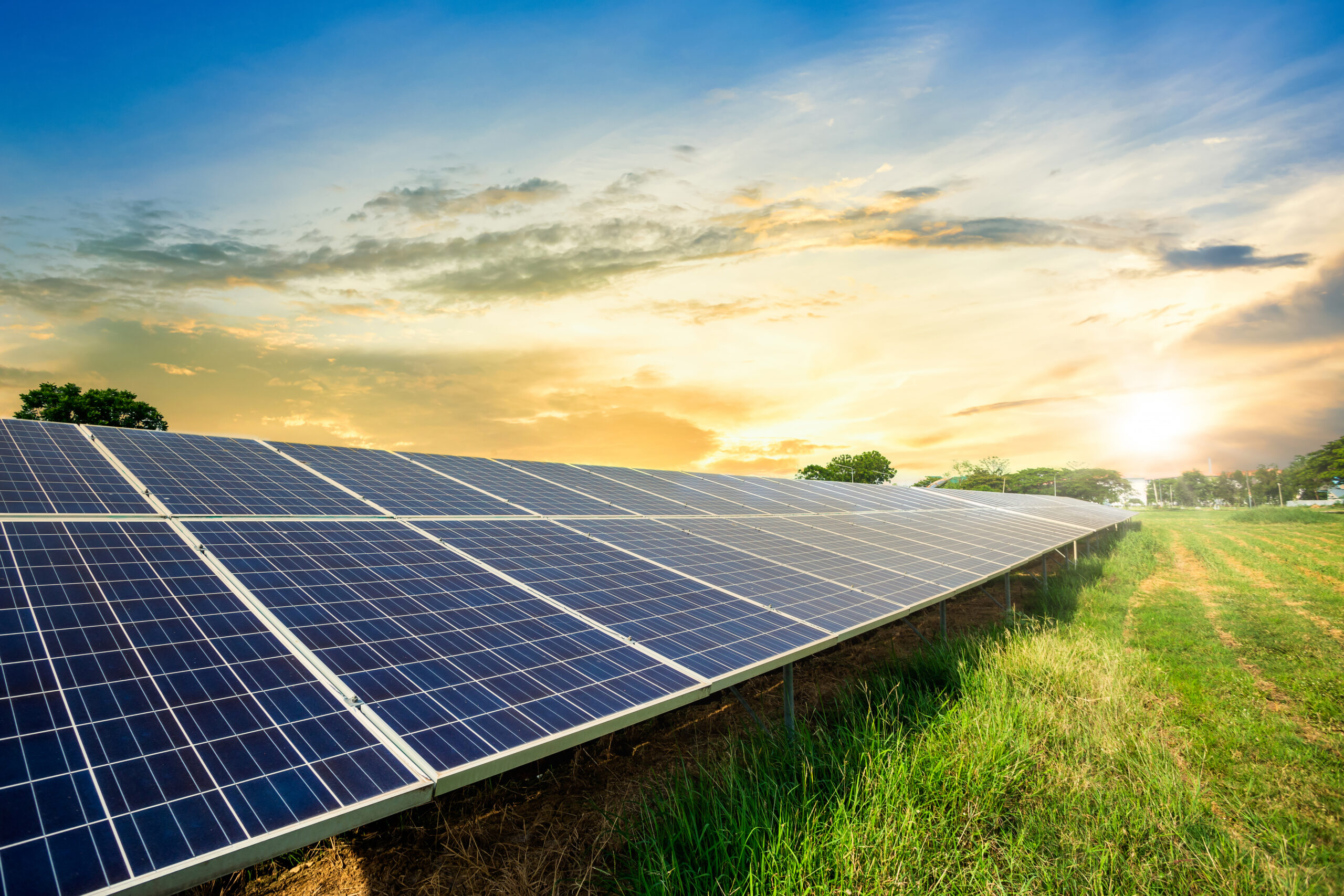
Förderung erneuerbarer Energien
Um die langfristigen energiebezogenen Herausforderungen im Zusammenhang mit dem Klimawandel zu bewältigen, ist eine sinnvolle Umstellung auf erneuerbare Energien wie Solar- und Windenergie erforderlich. Wenn es wirtschaftlich sinnvoll ist, suchen wir nach Möglichkeiten, in erneuerbare Energietechnologien zu investieren und diese in unseren weltweiten Betrieben auszubauen. Bis heute haben wir über 11.500 Solarmodule mit einer Solarstromproduktion von 3,1 Millionen kWh installiert. Seit 2016 haben wir unsere Beschaffung erneuerbarer Energien sowohl vor Ort als auch außerhalb erhöht, um unseren CO2-Fußabdruck zu verringern. Greif-Standorte in Nordamerika, Brasilien, Chile, China, der Tschechischen Republik, Israel und den Niederlanden beziehen erneuerbare Energien. Im Jahr 2023 stammten 15,4 Prozent (3.107.497 GJ) des gesamten Energieverbrauchs von Greif (20.136.883 GJ) aus erneuerbaren Energiequellen wie Biomasse und Solarenergie. Wir sind bestrebt, zusätzliche Möglichkeiten zur Beschaffung erneuerbarer Energien zu finden und zu nutzen.
Kreislaufwirtschaft
Unsere Klimastrategie legt großen Wert auf die Förderung der Kreislaufwirtschaft durch Initiativen wie die Verbesserung der Recyclingfähigkeit unserer Produkte, den Ausbau unseres Wiederaufbereitungsnetzwerks, die Reduzierung der Materialstärke, die Erhöhung der Verwendung von recycelten Rohstoffen und ein effektives Abfallmanagement. Diese und unsere anderen Kreislaufinitiativen spielen eine entscheidende Rolle bei der Reduzierung unserer Scope-3-Treibhausgasemissionen. Bitte besuchen Sie die Website dieses Berichts. Zirkuläre Fertigung Und Innovation Abschnitte, um mehr über unsere Bemühungen zur Förderung der Kreislaufwirtschaft zu erfahren.
Indem wir die Abfallentsorgung auf Mülldeponien minimieren, verringern wir aktiv die Emissionen, die mit dem Transport, der Sortierung und der Verarbeitung von Abfällen verbunden sind. Unser Engagement zur Abfallreduzierung dient auch dazu, die Produktion von Deponiegas zu reduzieren, einer besonders wirksamen Mischung von Treibhausgasen, die bei der Zersetzung von Abfällen freigesetzt wird. Derzeit leiten wir 88 Prozent unseres Abfalls von Mülldeponien ab und arbeiten kontinuierlich daran, die verbleibenden 12 Prozent, die auf solchen Standorten entsorgt werden, zu minimieren. Bitte besuchen Sie die Website dieses Berichts. Abfall Abschnitt, um mehr über unsere Bemühungen zur Abfallbewirtschaftung zu erfahren.
Scope 3-Emissionen
Zusätzlich zu unseren Bemühungen um Kreislaufwirtschaft und Abfallreduzierung arbeiten wir daran, unsere Treibhausgasemissionen des Geltungsbereichs 3 durch unsere Einkaufsentscheidungen, die Zusammenarbeit mit Lieferanten und die Steigerung der Effizienz von Transport und Logistik in unserer Wertschöpfungskette zu reduzieren. Unsere Partnerschaften mit der SmartWay-Initiative der US-amerikanischen Umweltschutzbehörde und EcoVadis ermöglichen es uns beispielsweise, die Nachhaltigkeitsleistung unserer Lieferanten zu verstehen. Bitte besuchen Sie die Website dieses Berichts. Globales Supply Chain Management Abschnitt, um mehr über unsere Arbeit entlang unserer Lieferkette zu erfahren.
Ziele, Fortschritt und Leistung
Ziele für 2030:
- Reduzieren Sie die absoluten Treibhausgasemissionen (Scope 1 und Scope 2) um 28 Prozent gegenüber dem Basiswert von 2019.
- Reduzieren Sie unseren Energieverbrauch für jede Produktionseinheit um 10 Prozent gegenüber dem Basiswert von 2019.
Im Jahr 2020 haben wir gemeinsam mit einem Drittanbieter eine umfassende Analyse durchgeführt, um unsere Fähigkeit zu bewerten, ein Ziel im Einklang mit Die Wissenschaftsbasierte Zielinitiative (SBTi). Anschließend haben wir öffentlich unsere Verpflichtung bekannt gegeben, die Scope-1- und Scope-2-Emissionen bis 2030 um 28 Prozent zu reduzieren, ausgehend von einem Basiswert von 2019. Dieses Ziel steht im Einklang mit den vorherrschenden Erkenntnissen der Klimawissenschaft, die darauf abzielen, die globale Erwärmung auf unter 2 °C zu begrenzen. Aufgrund unserer Akquisitionen und der kontinuierlichen Verbesserungen bei der Datenerfassung seit 2019 können wir keine detaillierte Analyse unserer Leistung im Hinblick auf dieses Ziel vorlegen. Unsere absoluten Scope-1- und Scope-2-Emissionen (standortbezogen) im Geschäftsjahr 2023 waren jedoch 12 Prozent niedriger als im Geschäftsjahr 2022.
Im Jahr 2023 haben wir durch Energieaudits und entsprechende Korrekturmaßnahmen wie Leckreparaturen, Wärmerückgewinnung, verbesserte Isolierung, Geräteaufrüstungen und andere betriebliche Verbesserungen an der Verwirklichung unserer Ziele gearbeitet. So hat beispielsweise unser Geschäftsbereich CorrChoice gemeinsam mit Versorgungsunternehmen, Kollegen und externen Experten Energieaudits durchgeführt, Möglichkeiten zur Verbesserung der Energieeffizienz priorisiert und Anreize und Programme zur Unterstützung von Investitionen in die Energieeffizienz ermittelt. Unsere Kollegen von CorrChoice haben Projekte identifiziert, die den Kohlenstoffausstoß um mehr als 3.600 Tonnen pro Jahr reduzieren und in weniger als 18 Monaten zu einer Amortisierung durch Energieeinsparungen führen werden.
Seit 2011 arbeitet Greif mit Enel im Bereich Demand Response (DR) zusammen. Durch die Nutzung der Energieüberwachung in Echtzeit, um Marktchancen zu nutzen und die Betriebszuverlässigkeit zu verbessern, hat Greif bisher über $4,4 Millionen aus dem Programm verdient, davon $1,3 Millionen in den letzten drei Jahren. Derzeit sind 17 Greif-Anlagen bei DR angemeldet, wobei Enel unsere kontinuierlichen Bemühungen in den Bereichen Energieeffizienz und Nachhaltigkeit unter Beweis stellt.
Im Jahr 2022 haben wir eine Analyse unserer Scope-3-Emissionen abgeschlossen, die noch nicht zur Festlegung eines neuen Scope-3-Ziels für 2023 geführt hat. Wir werden jedoch kontinuierlich daran arbeiten, geeignete Ziele für die Einführung eines langfristigen Netto-Null-Emissionsziels im Einklang mit der SBTi festzulegen. Wir suchen aktiv nach Möglichkeiten zur Zusammenarbeit mit unseren Lieferanten, Kunden und anderen Interessengruppen, um unsere Scope-3-Emissionen zu reduzieren.
Energie- und Treibhausgasemissionsdaten
|
|
Geschäftsjahr 2019 |
Geschäftsjahr 2020 |
Geschäftsjahr 2021 |
Geschäftsjahr 2022 |
Geschäftsjahr 2023 |
|---|---|---|---|---|---|
| Energie1 | |||||
| Gesamtenergieverbrauch (MWh) | 5,398,000 | 5,423,000 | 5,832,000 | 6,145,000 | 5,594,000 |
| Energieeinsparung pro Produktionseinheit2 |
Ausgangslage
|
-
|
-0.3%
|
-2.3% | -5.5% |
| Treibhausgasemissionen (Tausende Tonnen)3 | |||||
| Treibhausgase Scope 1 |
686
|
693
|
697
|
756 | 656 |
| Treibhausgase Scope 2 (standortbezogen)4 |
622
|
590
|
557
|
565 | 501 |
| Treibhausgase Scope 3* |
4,407
|
4,148
|
4,357
|
5,019 | 5,062 |
| Treibhausgase gesamt |
5,715
|
5,430
|
5,611
|
6,340 | 6,219 |
| Emissionsreduzierung pro Produktionseinheit5 |
Ausgangslage
|
-
|
4.1%
|
0.41% | -2.1% |
- Energie von erworbenen Standorten ist in den Daten für das Geschäftsjahr 2023 enthalten (Lee, Centurion und ColePak).
- Der Energieverbrauch pro Produktionseinheit umfasst nur den Energieverbrauch bei PPS Mills, PPS CorrChoice, PPS IPG, PPS RFG, GIP EMEA, GIP APAC, GIP Nordamerika, GIP Lateinamerika und LCS NA. Dies ermöglicht einen genaueren Jahresvergleich im Einklang mit den Berechnungen der Vorjahre.
- Die Emissionen der Bereiche 1 und 2 umfassen Daten aus kürzlich erfolgten Übernahmen (Lee, Centurion und ColePak). Die meisten Quellen des Bereichs 3 enthalten Daten aus den Übernahmen (Geschäftsreisen, ausgelagerte Versanddaten, Investitionsgüter, Investitionen und Lieferantenausgaben umfassen Daten aus Übernahmen).
- Aufgrund der überarbeiteten Daten zum Energieverbrauch von Greif wurden die Scope-2-Emissionen für das GJ 2019 seit 2021 neu angegeben.
- Die Emissionen pro Produktionseinheit umfassen nur die Emissionen im Zusammenhang mit dem Energieverbrauch bei PPS Mills, PPS CorrChoice, PPS IPG, PPS RFG, GIP EMEA, GIP APAC, GIP Nordamerika, GIP Lateinamerika und LCS NA. Dies ermöglicht einen genaueren Jahresvergleich im Einklang mit den Berechnungen der Vorjahre.
- Treibhausgas-Verifizierungserklärung 2023
Greif Pudahuel in Chile erreicht 100% erneuerbare Energie
Greifs Stahlwerk Pudahuel in Chile war unsere erste Anlage in Lateinamerika, die zu 100 Prozent mit erneuerbarer Energie betrieben wurde. Im Rahmen eines zweijährigen Projekts in Zusammenarbeit mit dem Energieversorger IMELSA ENERGIA konnte die Anlage ihre gesamte Stromversorgung zu 100 Prozent auf erneuerbare Quellen umstellen. Die Anlage produziert große Stahlfässer, konische Fässer und Wasserflaschen für die Märkte Chemikalien, Schmieröl sowie Lebensmittel und Getränke. Diese Umstellung fördert unsere Nachhaltigkeitsstrategie, unterstützt unser Ziel der Reduzierung der Treibhausgasemissionen bis 2030 und trägt dazu bei, die Ziele unserer Kunden zur Reduzierung der Scope-3-Emissionen zu unterstützen.
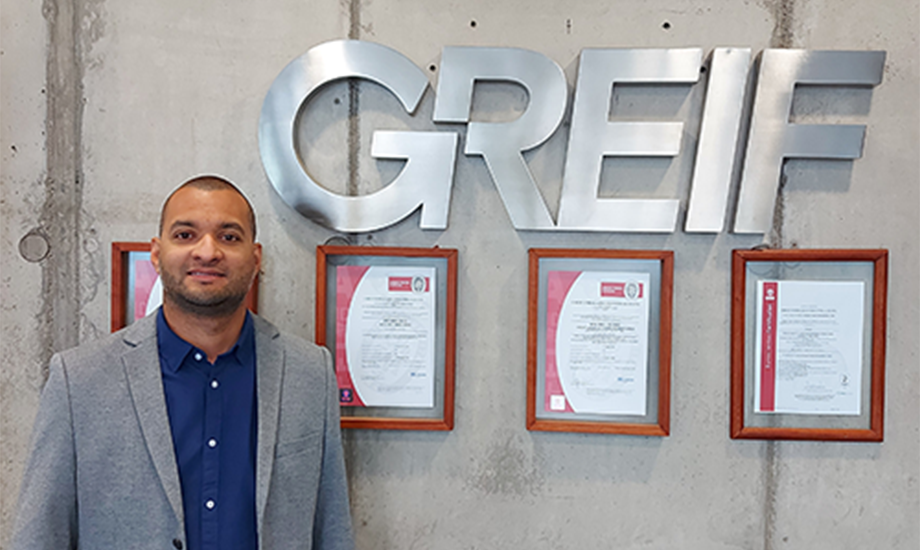
Enel X Demand Response
Seit 2011 nimmt Greif an Demand Response (DR) mit Enel X teil, einer Abteilung der Enel Group Worldwide, einem multinationalen Energieunternehmen und führenden integrierten Akteur auf den weltweiten Strom- und Gasmärkten. Enel Xs DR und die Echtzeit-Energieüberwachung ermöglichen Unternehmen den Zugang zu Marktchancen, um Flexibilität zu monetarisieren, die Betriebszuverlässigkeit zu erhöhen und Fortschritte in Sachen Nachhaltigkeit hervorzuheben. Greif hat über $4,4 Millionen an DR-Einnahmen angesammelt, darunter $1,3 Millionen in den letzten drei Jahren. Etwa 17 Greif-Anlagen sind bei DR mit Enel X angemeldet. Wir prüfen, ob Standorte für die Teilnahme an DR infrage kommen und geeignete Kandidaten sind, um unsere Teilnahme am Programm auszuweiten.

LATAM Tigre Energiestudie
Greifs LATAM-Standort Tigre führte eine multidisziplinäre Bewertung aller lateinamerikanischen Werke durch, um den Energieverbrauch pro produzierter Einheit bis 2025 um 6% gegenüber dem Basiswert von 2019 zu senken. Alle Maschinen, Peripherieteile, allgemeine Geräte und Elemente, die Strom verbrauchen, wurden identifiziert und bewertet. Dabei wurden in ganz LATAM 447 Energieschwerpunkte ermittelt. Aus diesen Schwerpunkten wurden 70 strategische Energieprojekte ermittelt. Bis November 2023 wurden in LATAM 6 Energieeffizienzprojekte abgeschlossen, die zu einer Energiekosteneinsparung von $29.300 pro Jahr und einer Reduzierung des Energieverbrauchs um 63.000 Kilowattstunden pro Jahr führten.
